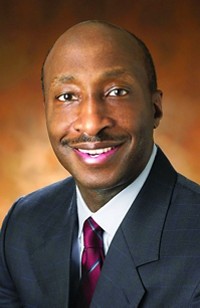Advertisement
Grab your lab coat. Let's get started
Welcome!
Welcome!
Create an account below to get 6 C&EN articles per month, receive newsletters and more - all free.
It seems this is your first time logging in online. Please enter the following information to continue.
As an ACS member you automatically get access to this site. All we need is few more details to create your reading experience.
Not you? Sign in with a different account.
Not you? Sign in with a different account.
ERROR 1
ERROR 1
ERROR 2
ERROR 2
ERROR 2
ERROR 2
ERROR 2
Password and Confirm password must match.
If you have an ACS member number, please enter it here so we can link this account to your membership. (optional)
ERROR 2
ACS values your privacy. By submitting your information, you are gaining access to C&EN and subscribing to our weekly newsletter. We use the information you provide to make your reading experience better, and we will never sell your data to third party members.
Business
Fresh Start For Pharma
Outlook: Despite challenges, drug firms were upbeat at the JPMorgan Healthcare meeting
by Lisa M. Jarvis
January 18, 2010
| A version of this story appeared in
Volume 88, Issue 3

Life sciences executives attending the annual JPMorgan Healthcare Conference in San Francisco last week exuded optimism that their industry is moving beyond a trying period. Smaller companies were hopeful that the financial turmoil has subsided, and bigger firms were keen to show they are getting back to business after a wave of consolidation.
“A year ago, the pessimism was at every level,” said Steven R. Gullans, managing director of Excel Venture Management, which invests in small life sciences firms. Biotech entrepreneurs couldn’t raise money, bankers were worried about their jobs, and venture capitalists were wary of financing companies that may not produce a return for years, if ever, he said.
Today, the capital markets seem to be coming back. And although the biotech crowd has thinned in the past year, investors predict that the modestly healthier financial climate will allow some of the survivors to go public this year.
Meanwhile, big pharma still faces many of the same challenges it did before the crisis: patent expirations, fewer product launches, and shrinking health care budgets, to name a few. But companies presenting at the conference seem to have accepted those hurdles and are focused on new and improved strategies to overcome them.
To that end, Pfizer and Merck & Co. talked up the efficiency of new R&D operations resulting from their 2009 acquisitions of Wyeth and Schering-Plough, respectively.
Martin Mackay, president of PharmaTherapeutics R&D at Pfizer, noted at the conference that a portfolio review now under way will ultimately reduce the number of molecules in development at the firm by 25%. At the end of the process, Pfizer expects to be running a combined R&D operation with a budget on par with what Pfizer alone spent before the merger.
Peter S. Kim, president of Merck Research Laboratories, said his firm’s combined portfolio should be at “the right size” by the end of the month. Before Merck closed on its purchase of Schering-Plough in November, the companies had already begun preparing to consolidate their pipelines, drawing up a dossier on the scientific, competitive, and financial merits of each molecule. Since the merger, Merck has held two weekend-long meetings to separate the winners and losers, with an equal number of cuts coming from each side, Kim said.
At the conference, nearly every big pharma company highlighted a strategy in emerging markets, which are important growth opportunities for both branded and off-patent products. In the years ahead, more than 50% of growth in the drug industry will come from those regions, noted Sanofi-Aventis CEO Christopher Viehbacher.
Several firms’ strategies for emerging markets include pushing into the generics business. In the past year, Pfizer, Sanofi-Aventis, and GlaxoSmithKline have all bought generics firms in countries with growth potential to jump-start business there.
But some pharma executives suggest the industry should advance that strategy with caution. For example, although Roche has earmarked developing countries as an area of growth, Chief Financial Officer Erich Hunziker noted that the firm is “committed to some, but not all” regions. He suggested that it would be tough to guarantee financial control over acquisitions in some of the more challenging markets.
Eli Lilly & Co.’s primary objective in emerging markets is to sell products from its existing portfolio, said CEO John C. Lechleiter. To help accomplish this goal, the company has doubled its presence in China, adding 1,000 people on the ground to promote Lilly medicines. Unlike some of its peers, “we don’t intend to build a generics business in emerging markets,” Lechleiter said.
Big-pharma executives at the conference also acknowledged that the days of launching products with incremental benefit to patients are over. “In today’s world of shrinking health care budgets, we can no longer get money for medicines with little or no value,” Lechleiter said.







Join the conversation
Contact the reporter
Submit a Letter to the Editor for publication
Engage with us on Twitter